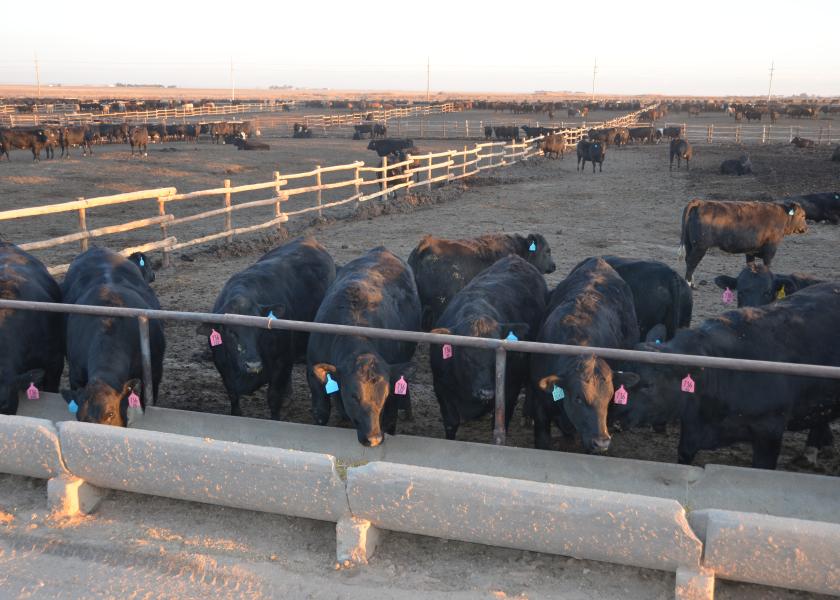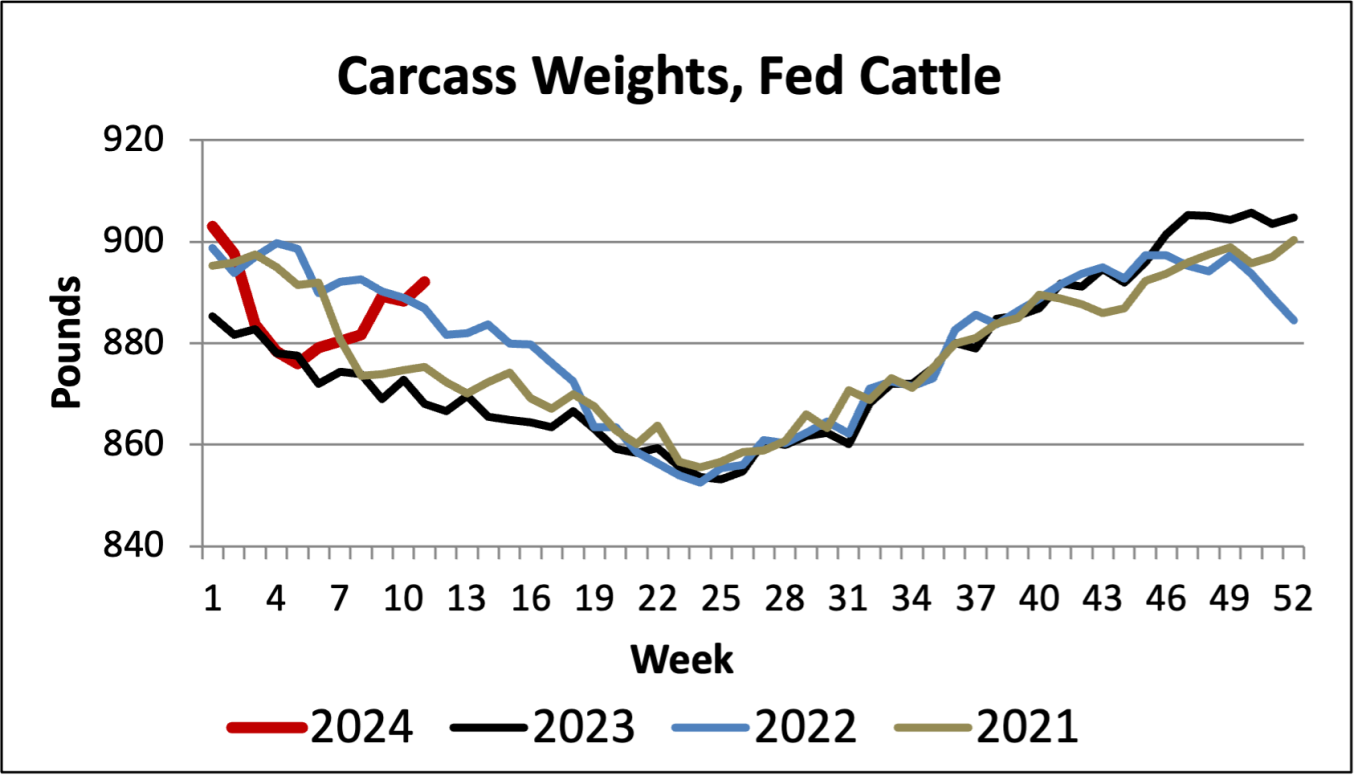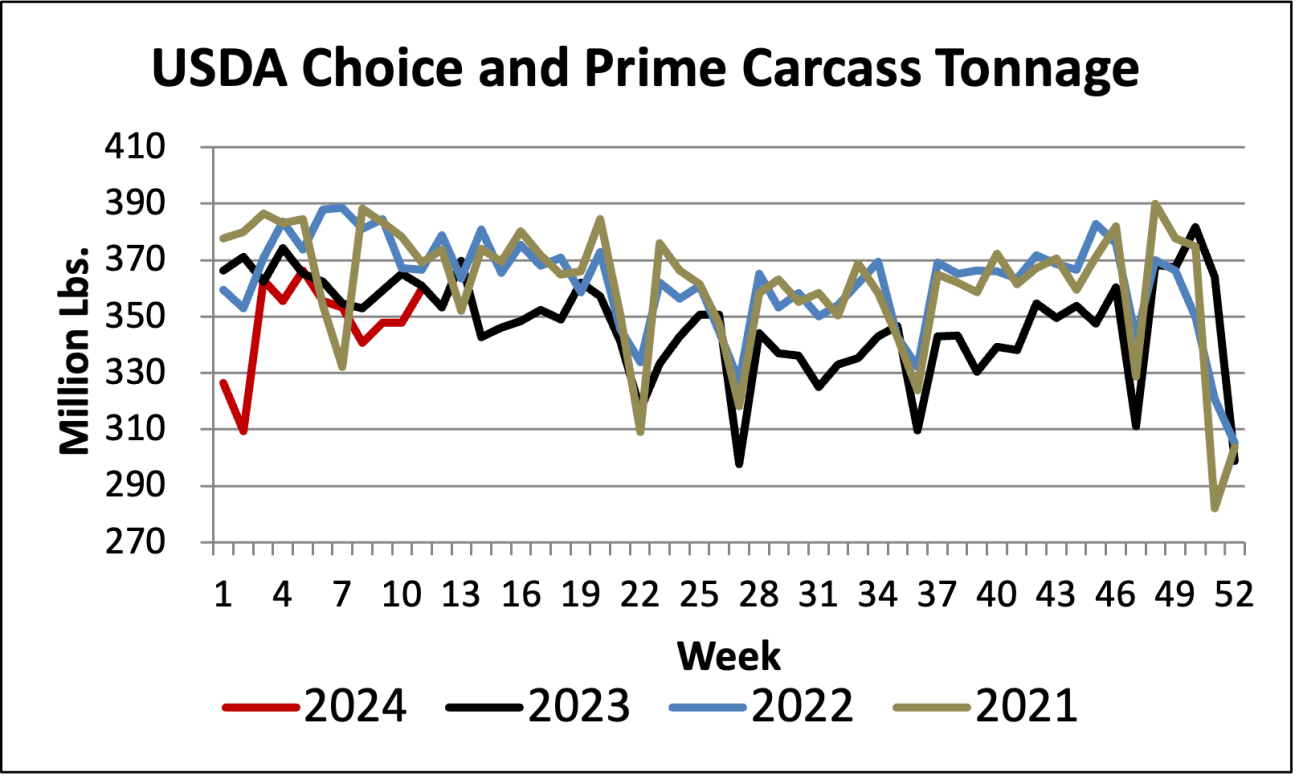CAB Insider: Carcass Weights Buoy Production

Last week’s federally inspected cattle slaughter was 12,000 head lower than the prior week at 586,000 head. The Good Friday holiday curtailed that day’s production total by about 10,000 head, as compared to the prior two Fridays that averaged 87,000 head per day.

Highly Pathogenic Avian Influenza (HPAI), discovered in dairy cattle in Texas on March 25, has since been the bane of the beef market complex. Other sources, including the Centers for Disease Control and Prevention, have posted extensive information on the topic for comprehensive reference.
Even though there is no known threat of infection through the food supply, Live and Feeder Cattle futures contracts plummeted last Tuesday with a $3/cwt. dip in the April 2024 Live Cattle contract. On Monday of this week, news about a Texas dairy worker diagnosed with the virus sent the contract down another $5/cwt. upon the day’s close.
Fed cattle market fundamentals held the spot cash cattle trade a bit higher in last week’s average steer price of $187.39/cwt. This was a firm setback from the prior week’s $189.26/cwt. price point but a small victory considering that cash didn’t follow futures further lower. From a cattle feeder’s perspective, it’s extremely frustrating to watch futures sentiment, led by emotion rather than logic, disrupt a market previously building into a needed spring rally.
Boxed beef cutout values traded unevenly lower last week with the Choice/Select spread average for the week widening to $14.40/cwt. in Urner Barry’s numbers. The CAB/Choice price spread narrowed from the leap it had made the prior week at $17.48/cwt. to last week’s more expected average of $14.08/cwt.
The quoted prices and spreads from a week ago are already stale as boxed beef values continue their pullback this Monday and Tuesday. Cutout values are in the range of $0.25/lb. or 9% higher than a year ago. Wholesale beef buyers are thus taking a cautionary attitude as spring grilling demand is not yet in gear. Rib demand has stalled following Easter, but strip loin values are cruising higher with latest wholesale values at $10.05/lb.
Carcass Weights Buoy Production
Fed cattle carcass weight trends have given us plenty of fodder for discussion in the past four months. Late December marked the record-heaviest steer carcass weights at 942 lb. each. This was an uncharacteristically late seasonal high driven by excellent weather conditions in major cattle feeding areas, badly deteriorated spot cattle prices and reduced slaughter. The December high, 22 lb. heavier than a year prior, quickly collapsed by 33 lb. to late January’s 909 lb. low after severe storms stalled feedlot performance for the month.
Another rapid turnaround toward warmer weather and improving pen conditions (on average) shot feedlot performance and carcass weights well above the seasonal expectation through mid-March with a 13 lb. increase in 6 weeks. That’s impressive given that “improving pen conditions” were far short of “good” pen conditions particularly in the northern feeding region. Latest steer weights are 23 lb. heavier than a year ago at 922 lb. each, record-high for the first two weeks in March.

A recovery in weights and performance was expected as weather conditions improved following January. Yet the magnitude of the weight rally is larger than anticipated, not only posting a recovery but creating an unseasonably sharply higher trend line in a period when weights historically trend lighter each week into May or June.
Beef supply ramifications from the current carcass weight anomaly are not insignificant. With a 466,000-head weekly average of fed cattle slaughter for the past month and the combined steer/heifer weight increase of 24 lb. per head, there is additional weekly production equivalent to 12,538 head of carcasses.
The Choice/Select price spread has narrowed this week with Tuesday’s USDA report showing a $5.21/cwt. spread and Urner Barry reporting an $11.24/cwt. value. Although the two are notably different, each represents an abrupt pullback from a week ago. This is not abnormal for this early spring period when the fed cattle carcass mix tends to be its richest with Choice and Prime carcasses, currently combined for 85% of the carcass share. CAB carcass certification rates tend to top out similarly and the mid-March high of 42.2% of brand-eligible carcasses is three-tenths of a point below the March 2021 record-high.

The strong seasonal grade trend combined with exceptionally heavy carcass weights is underpinning total carcass tonnage in the premium grades and brands. This is not erasing the shortfall in weekly slaughter head counts which are down 10% compared to a year ago in the past four weeks. Estimated Choice carcass tonnage is down in recent weeks by an estimated 4% in the same comparison. CAB carcasses are 6% fewer in total head count for the last month but heavier carcasses pull the deficit down to just a 3.7% lower in carcass tonnage.







